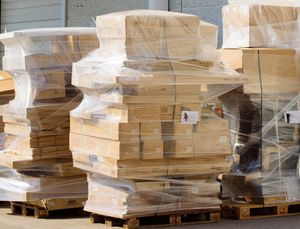The diaphanous material that holds together the containerized world.
To look at a container ship is to see the world as a set of modular units. The ship itself: a gigantic rectangle. Steel containers form an improbable stack of colorful bricks atop the deck, held together with twist-locks and lashing rods. Inside the shipping containers square wooden pallets subdivide the space, a nesting layer of modularity that bundles together smaller boxes and turns items into moveable and trackable units. But between the inner layers of this modular vision of blocks, cubes, and interchangeable units is the diaphanous material that holds together the subcomponents of the containerized world: stretch wrap.
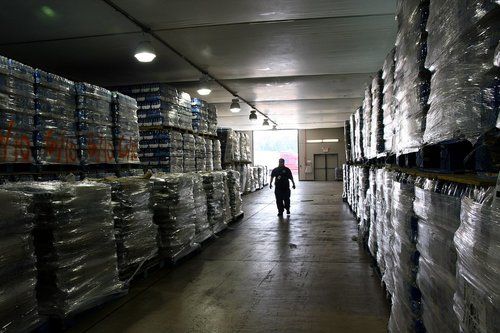
Stretch wrap — sometimes also called stretch film, cling film or pallet wrap — is a thin film of stretchable plastic used to wrap loads for transport and shipping. Stretch wrap provides strength and protection, helping things to get from A to B quickly and at scale. Its low cost, ease of application, and ability to stabilize loads has made it a preferred choice for attaching products to pallets. In 2007 it was estimated that 454 million kilograms (1 billion pounds) of stretch wrap was produced each year, equating to an estimated 3 billion pallets wrapped.
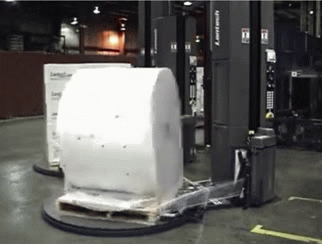
Stretch wrap is now ubiquitous for wrapping and stabilizing palletized loads, but its history and rise to prominence is somewhat murky, with details scattered through industrial product websites and scholarly papers. There isn’t a definitive date when stretch wrap was first used in industrial settings. Lantech, the self-proclaimed “inventors of the stretch wrapper,” was founded by brothers Pat and Bill Lancaster in 1972. As a corporate history of Lantech explains, the Lancasters initially aimed to develop an infrared heating system for shrink wrapping pallets (an alternative palletizing system that involves a loose plastic bag that shrinks to a tight cover when heat is applied). However, the shrink-wrapped bag system had significant limitations at the time, and the brothers hypothesized that stretch wrap — which they initially conceptualized as a kind of rubber band that would stretch around a pallet load — could help to overcome some of these issues.
The stretch is key. Unlike its domestic cousin cling film (popularized in the US as “Saran Wrap”), which serves to seal in moisture and keep out air, stretch wrap was designed for its elongation and tensile strength, which helps hold objects together and keeps unruly loads under control. Lantech debuted their first semi-automated pallet wrapping machine to much enthusiasm at the 1973 Packaging Machinery Manufacturers trade show, and by 1977 they were selling one machine per day. Today they remain an industry leader; their semi-automated machines cost in the neighborhood of $10,000.
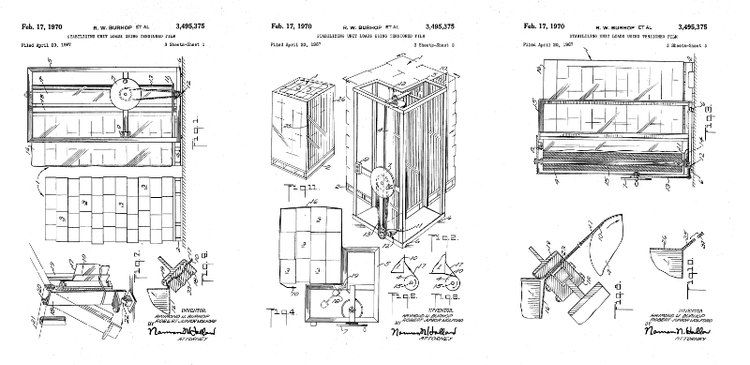
The relative invisibility of stretch wrap outside the warehouse or distribution center is echoed in the critical literature on the movement of cargo. While supply chains and shipping logistics have received a burst of scholarly attention over the past decade, the bulk of it centers on the shipping container and the container ship, telling a story of big boats, big containers, big machines, and the systems of labor and logistics that move them around. In his book The Container Principle, author Alexander Klose writes that “it is, above all, this image of a frictionless, well-ordered organization through standardized containers that makes containers so attractive as a structural metaphor. It evokes the image of a neutral medium, a pure movement of units of information, production, and consumption on the circuits of systems.”
Perhaps because stretch wrap lacks a similar sense of frictionlessness and order, there is comparatively very little critical scholarship on it and the other components (pallet straps, edge protectors) that are essential to modern shipping and logistics. If the container is what allows things to move from land to sea to land, and the pallet is what allows products to be moved from warehouses to containers to trucks to distribution centers, then stretch wrap is what allows diverse products to be bundled together and made anew as palletized cargo. We see a need to dig further into what scholars Gregson, Crang and Antonopoulos call “logistics-in-action”: the improvisational and transient aspects of freight and logistics — the mess, the scraps, and the plastic.
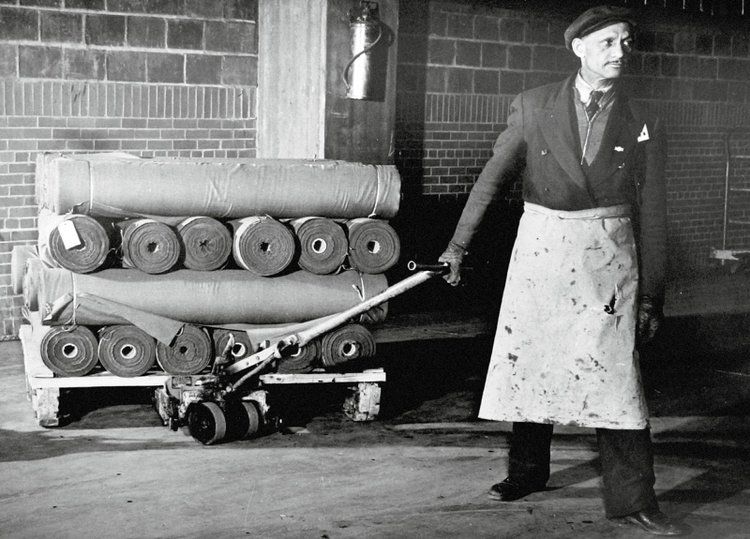
As has been well documented, the shift to containerization revolutionized the shipping industry, transforming the way goods are moved through the entire supply chain and leading to a cascade of changes to infrastructure and information systems. Shipping became much faster post-containerization, with ships able to be loaded or unloaded in a few hours rather than days, speeding up the transit of cargo around the world. The widespread use of pallets, which emerged prior to containerization but was then eagerly incorporated into shipping workflows, enabled diverse supplies to be transported in single, homogenous units rather than a series of smaller, more unwieldy items.
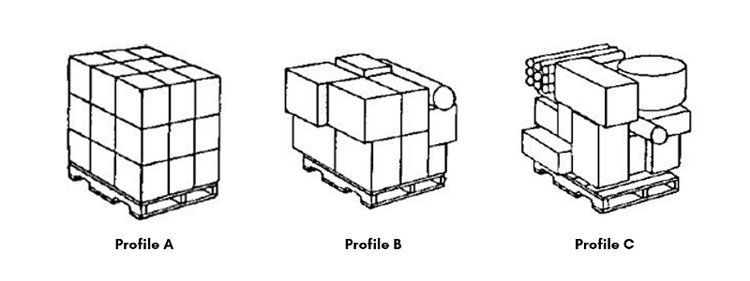
The segmentation of cargo involves a veritable Russian Doll of containment, beginning with the outermost layer of pallets and the materials used to hold them to the product they carry — “tertiary” or “transit” packaging in logistics parlance. Once the outer layer is removed with the slash of an utility knife, stacks of boxes or cartons – secondary packaging – are exposed. These boxes hold together groups of individual package units (a can of beans, a ream of printer paper, a pair of shoes), which are purchased by the end user. The end user container, often printed with logos and branded images, constitutes the primary packaging.
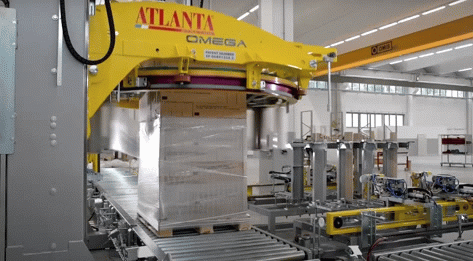
Some elements of the shipping process have been almost fully automated or mechanized, for example the loading of containers on and off ships. But the act of consolidating products into cargo for transit, and deconsolidating that cargo back into goods, is often too eclectic to be fully automated. During these critical points of transition, stretch wrap plays a vital role in helping workers turn products into cargo. With stretch wrap, like things can be combined into a single concise unit, and unlike things can be forced together into a palletized bundle.
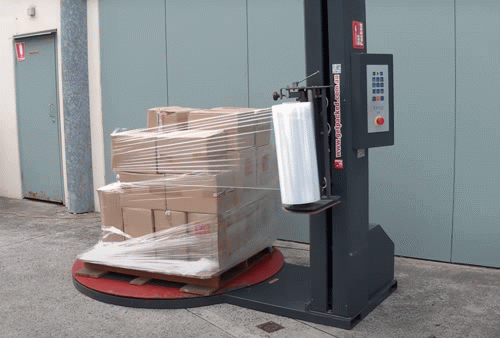
Pallet loads take different forms depending on the context — the homogenous stack of boxes produced by a warehouse will look different from the mish-mash of crates, cartons and bags assembled by a produce distributor. Reflecting this variance, the method used to wrap pallets varies depending on context. Some smaller-scale operations may choose to hand-wrap, a low-cost and flexible solution. Warehouses and distribution centers, on the other hand, will likely invest in automatic or semi-automatic wrapping machines, some of which can stretch the plastic to over 300%, increasing the strength and stability of the load and reducing the amount of wrap needed.
To an outsider, rolls of stretch wrap all look remarkably similar, with roll size and film color being the primary variables. Behind the surface homogeneity, though, there is a veritable pick-a-path of materials, production methods and application techniques that all have significant impact on the cost per load, amount of plastic used, and stability provided to each load.
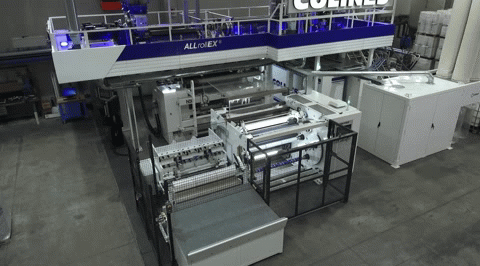
Early versions of stretch wrap were made from a single layer of plastic, either low density polyethylene (LDPE) or polyvinyl chloride (PVC). While PVC had more stretch (50%) than LPDE (30%), it was more prone to breakage and thus less popular. Since the 1980s, the most popular material for stretch wrap has been linear low density polyethylene (LLDPE), which makes for a stretchier and more resilient wrap. Over time, stretch wrap evolved from mono-layer to multi-layer, with three layer wrap becoming popular in the 1980s. Each layer provided a different property — the middle layer for strength, the outer layer for a smooth finish and the inner layer to prevent sticking to the product being wrapped. In the following decades multi-layer wraps became the norm. While wraps of up to 55 layers have been developed, 5, 7 and 9 layers are now the industry standard.
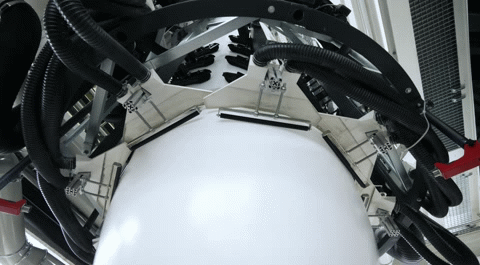
The type of material and number of layers aren’t the only variables: How stretch wrap is made is also a key factor. There are two production methods to turn pellets of resin into a wrap — blown or cast/extruded. The blown process includes heating up the resin and blowing it into a bubble, which is collapsed and formed into film through a set of rollers. This process makes the film more expensive to produce but results in higher resistance to punctures and tears — good for mixed loads. The casting process sees resin extruded through a slot die and cooled through a set of rollers.
Regardless of the specifics of its manufacture, thin, flexible and transparent stretch wrap can appear as a material without substance compared with the bulk and mass of pallets and shipping containers. Once a shipment has been unloaded, shipping lines and haulage companies must deal with empty containers and pallets, and are required to put time and money into storing and redeploying these “empties” to where they're needed. Stretch wrap doesn’t create empties. It is not reused. Stretch wrap is the thing that gets sloughed off, shed like a skin when goods arrive at their next port of call. It eases the way, and then is thrown away.
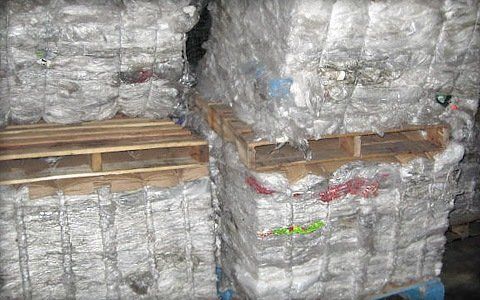
The challenge that plastic poses – especially single-use soft plastic like stretch wrap – is one of waste and disposal. With over a billion pounds of stretch wrap cycling through warehouses and logistics centers each year, it’s impossible not to think of its end of life: Where does it go? How is it stewarded? Who does it harm?
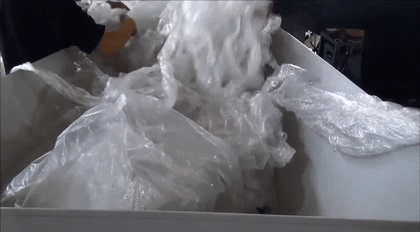
While recycling soft plastics is a fraught proposition at the curbside level (it is easily contaminated and tends to get entangled in sorting lines at recycling centers, and even when the process goes perfectly it still results in material with degraded physical properties), used stretch wrap has three qualities that would seem to make it easier to recycle: it is available in large volumes, it tends to be homogenous, and (in industrial and to a lesser extent commercial settings) it tends to be clean. Still, while film recycling rates have been increasing over the past decade, they remain persistently low. Stretch wrap is no different: According to some industry estimates, only 5.4% of it is recycled. The rest goes to landfill.
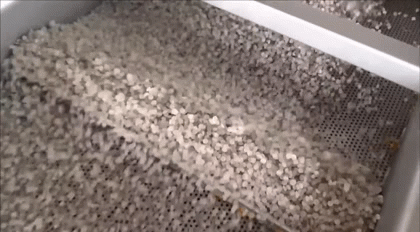
In a way, recycling is a red herring: As with other single-use plastics, stretch wrap is so effective because it’s disposable. Empty containers and pallets add complexity to the system, reducing the absolute ease and efficiency of global shipping even as they allow for its existence. Stretch wrap, in contrast, is used and then immediately forgotten. Its lack of reusability, and the challenges of recycling it, are easily overlooked: a convenient, and terrible, externality. But when whole supply chains rely on the existence and affordability of an externality, getting rid of it without transforming the entire system is near impossible.
Stretch wrap illustrates one of the fundamental stories of the twentieth century. On the one hand, cities and industries are constructed on an epic and hyper-visible scale from steel, wood, glass, and feats of engineering. On the other hand, within the interior spaces of the warehouse, the factory, and the distribution center, plastic expands and stretches to ease the friction of enormously complex systems and abet workers as they bundle and unbundle, load and shift. Stretch wrap, pallet straps, hairnets, injection moldings, shrink film, trash bags. Plastic does what steel cannot: take on any shape and then disappear from sight when you’re done with it.

